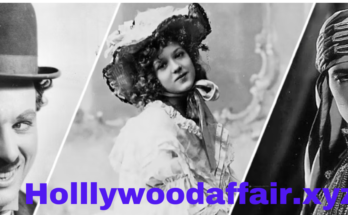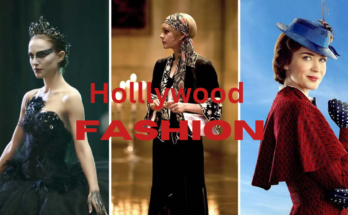defining a transformative period and setting new standards for cinematic brilliance. These films are celebrated for their engaging stories, innovative techniques, and cultural impact. Some of the most notable films from this era include:
– “Gone with the Wind” (1939): Directed by Victor Fleming, this film is revered as one of the greatest in film history. Based on Margaret Mitchell’s novel, it tells the tumultuous story of Scarlett O’Hara, a Southern belle whose life is dramatically altered by the American Civil War. Its epic scale, unforgettable performances, and stunning Technicolor visuals have cemented its place as a landmark film. It won several Academy Awards, including Best Picture, and continues to be a defining work in American cinema.
– “Casablanca” (1942): Directed by Michael Curtiz, “Casablanca” is often regarded as one of the greatest films ever made. Set during World War II, it follows Rick Blaine, a nightclub owner in Casablanca, who becomes entangled in a love triangle and political intrigue. The film’s iconic lines, such as “Here’s looking at you, kid,” along with memorable performances by Humphrey Bogart and Ingrid Bergman, have ensured its status as a timeless classic.
– “Citizen Kane” (1941): Directed by and starring Orson Welles, “Citizen Kane” is frequently considered the greatest film of all time. Its innovative techniques, including deep focus, nonlinear storytelling, and complex character development, transformed the art of filmmaking. Despite initial commercial struggles, “Citizen Kane” has since been hailed as a masterpiece, influencing countless filmmakers and establishing a new benchmark for cinematic creativity.
– “The Wizard of Oz” (1939): Also directed by Victor Fleming, this fantasy musical has become a cultural touchstone. Its vibrant Technicolor, unforgettable songs, and the magical journey of Dorothy in Oz have made it a cherished classic for audiences of all ages. Its impact on popular culture is evident in its enduring relevance and the lasting appeal of its characters and music.
– “Singin’ in the Rain” (1952): Directed by Stanley Donen and Gene Kelly, this film is a delightful homage to the transition from silent films to talkies. Featuring iconic musical numbers, including the titular song, and a clever exploration of Hollywood’s early days, it stands out as a quintessential example of the musical genre. Its lasting popularity reflects its success in capturing the enchantment of Hollywood’s Golden Age.

The Role of the Academy Awards: Celebrating Film Excellence
The Academy Awards, commonly known as the Oscars, have played a vital role in shaping the legacy of Hollywood’s Golden Age. Established in 1929 by the Academy of Motion Picture Arts and Sciences (AMPAS), the Oscars quickly became the most prestigious honors in the film industry, recognizing excellence across various categories.
During this period, winning an Oscar was viewed as the pinnacle of achievement for actors, directors, and producers. The annual ceremony evolved into a glamorous event, drawing millions of viewers worldwide. Films that won multiple Oscars, such as “Gone with the Wind,” “Ben-Hur,” and “On the Waterfront,” became instant classics, their legacies enhanced by the Academy’s recognition.
The Oscars also significantly impacted the careers of stars and filmmakers. An award could propel an actor’s career to new heights and validate their work. The ceremony itself became a celebration of Hollywood’s achievements and influence, with winners often reflecting on the importance of their contributions.
The Impact of World War II: Hollywood’s Role in the War Effort
The outbreak of World War II had a profound effect on Hollywood and its productions. During the war, the industry became a crucial part of the American war effort, producing propaganda films, documentaries, and newsreels that supported the Allied cause. These films aimed to boost morale, promote patriotism, and encourage public support for the war.
Movies like “Casablanca,” “Mrs. Miniver” (1942), and “Yankee Doodle Dandy” (1942) captured the patriotic spirit of the era and uplifted both troops and civilians. Their depictions of heroism, sacrifice, and resilience resonated with audiences, reinforcing messages of unity and strength.
Hollywood stars also played an essential role in the war effort. Many actors and actresses enlisted, entertained troops, or participated in war bond drives. Icons like Clark Gable, James Stewart, and Audrey Hepburn became symbols of American patriotism, further endearing themselves to the public.
The war also influenced the themes and tones of Hollywood films. The optimism and escapism of pre-war cinema gave way to more serious narratives that explored the complexities of heroism, sacrifice, and the human cost of conflict. This shift is evident in films like “The Best Years of Our Lives” (1946) and “A Place in the Sun” (1951), which addressed the challenges faced by returning veterans and the war’s impact
The Golden Age at Its Height: Iconic Films and Lasting Impressions
The Golden Age of Hollywood, which flourished from the late 1920s to the early 1960s, is renowned for its allure, creativity, and artistic milestones. At its zenith, this period produced a remarkable array of iconic films that still enchant viewers and shape the cinematic world today. These films not only highlighted the skills of legendary actors and directors but also established new benchmarks for storytelling, technical mastery, and cultural significance. This in-depth examination explores the landmark films of the Golden Age, their unforgettable scenes, and the enduring legacy they have left on cinema.
Landmark Films of the Golden Age
Debuting in 1939, “Gone with the Wind” is often hailed as one of the most iconic films of the Golden Age and a cornerstone of American cinema. Directed by Victor Fleming and adapted from Margaret Mitchell’s novel, the film unfolds during the American Civil War and Reconstruction era, chronicling the tumultuous life of Scarlett O’Hara, a determined Southern belle whose world is shattered by the conflict.
The film’s impact was immediate and profound, achieving massive commercial success and becoming one of the highest-grossing films of all time (when adjusted for inflation). Its opulent production, grand scale, and dramatic storyline captivated audiences globally, establishing it as a cultural landmark that influenced American perceptions of history and identity.
Memorable Moments and Achievements
– Grand Scale and Production Design: The film is celebrated for its ambitious scope, featuring extensive Technicolor use, elaborate sets, and intricate costumes. Iconic scenes, such as the burning of Atlanta and sweeping vistas of Tara, the O’Hara family estate, exemplify its epic vision and technical brilliance.
– Performances and Awards: Vivien Leigh’s portrayal of Scarlett O’Hara and Clark Gable’s performance as Rhett Butler are among the most unforgettable in cinematic history. Leigh won the Academy Award for Best Actress, while Gable’s role became one of his most acclaimed. The film garnered ten Academy Awards, including Best Picture, and was lauded for its strong performances and production quality.
– Cultural Significance: “Gone with the Wind” emerged as a cultural phenomenon, shaping American cinema and culture for generations. Its portrayal of the South and its contentious depiction of slavery and race relations ignited discussions that resonate to this day. The film’s lasting influence is evident in its continued popularity and the myriad references and adaptations it has inspired.
Casablanca (1942)
Directed by Michael Curtiz and set against the backdrop of World War II, “Casablanca” is one of the most cherished and enduring films of the Golden Age. Starring Humphrey Bogart as Rick Blaine, a jaded nightclub owner in Casablanca, the film weaves a love triangle involving his former lover, Ilsa Lund (Ingrid Bergman), and resistance leader Victor Laszlo (Paul Henreid).
Upon its release, “Casablanca” was both a critical and commercial triumph, solidifying its status as a classic of American cinema. The film’s blend of romance, intrigue, and wartime drama, along with its memorable dialogue and performances, has secured its place in film history.
Memorable Moments and Achievements
– Iconic Dialogue: The film is famous for its unforgettable lines, such as “Here’s looking at you, kid,” and “We’ll always have Paris.” These quotes have become ingrained in cinematic history, contributing to the film’s lasting allure.
– Cinematic Techniques: “Casablanca” is noted for its masterful use of lighting, camera angles, and music. The interplay of shadows and silhouettes enhances its noir ambiance, while Max Steiner’s score, featuring the song “As Time Goes By,” deepens the film’s emotional impact.
–Awards and Legacy: The film won three Academy Awards, including Best Picture, Best Director, and Best Screenplay. Its success at the Oscars helped cement its status as a classic. The themes of love, sacrifice, and patriotism continue to resonate with audiences, ensuring its timeless appeal.
Citizen Kane (1941)
Often regarded as the greatest film ever made, “Citizen Kane” was directed by Orson Welles, who also stars as Charles Foster Kane, a wealthy newspaper tycoon whose life is examined through a series of flashbacks. The film is celebrated for its innovative storytelling techniques, including deep focus, non-linear narrative, and intricate character development.
While “Citizen Kane” did not achieve immediate commercial success, it has since been recognized as a cinematic masterpiece. Its influence on filmmaking is profound, with its techniques and narrative structure inspiring countless filmmakers and scholars.



